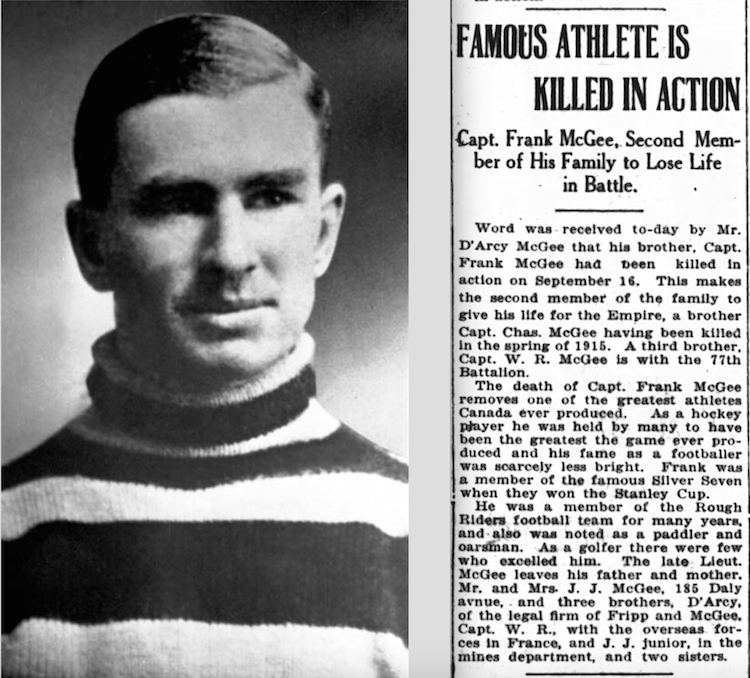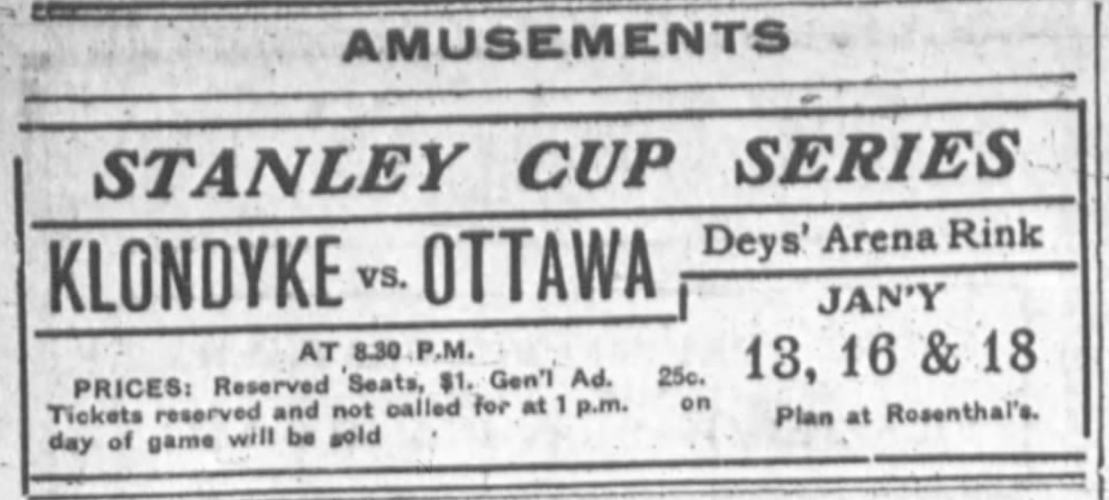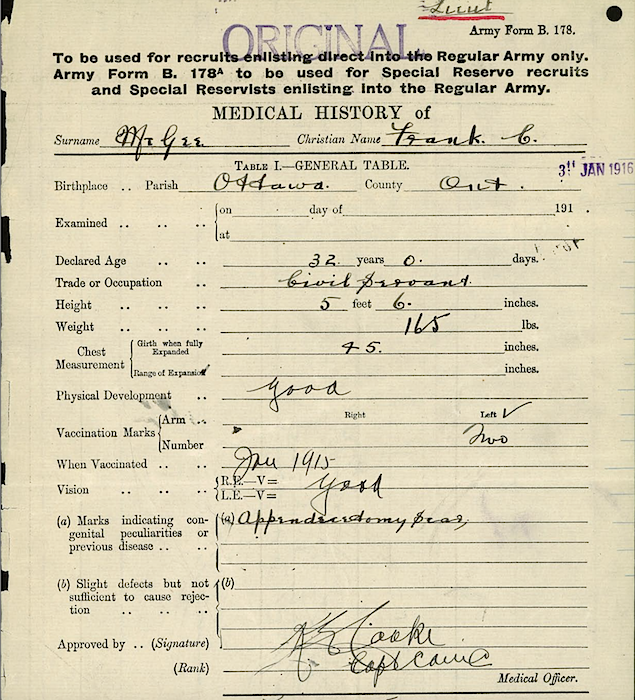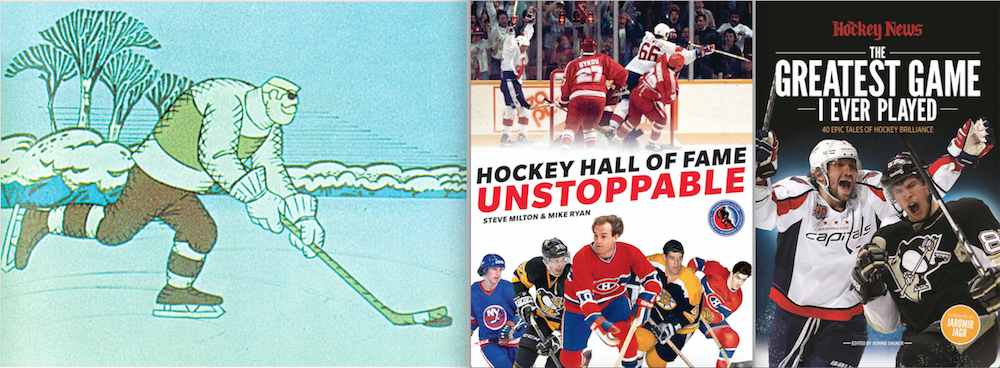One hundred years ago tomorrow, on September 23, 1916, word reached his family in Ottawa that the greatest hockey player of his day had been Killed in Action in World War I. Frank McGee had died in fighting at Courcelette in France, one week earlier, on September 16, 1916.

The newspaper story is from The Ottawa Journal on
September 23, 1916, confirming the death of Frank McGee.
McGee had left instructions that in case of casualty, his brother D’Arcy should be notified rather than his father, whom he’d listed as his next of kin. Rumours had begun to circulate on Friday, September 22, that McGee had died and D’Arcy McGee received confirmation that it was true while in his home at 12 Marlborough Avenue in Ottawa’s Sandy Hill District on Saturday. Another brother, Charles, had been been killed in the spring of 1915. A younger brother, Walter, would be shot through the shoulder in November, but he would survive the war.

From the war records of Frank McGee available on the Library and Archives Canada web site.
Frank McGee was one of thousands of Canadian casualties during the Battle of the Somme. His death hit his hometown, where he’d starred for the legendary “Silver Seven,” particularly hard.
“[O]nce again there has been brought home with gripping grief and pain the grim reality of the present conflict of nations,” reads a story in the Ottawa Citizen. “It is doubtful if the loss of any one of the splendid young Ottawans who have fallen at the front since the outbreak of war has occasioned such keen regret as that of the late Lt. Frank McGee … Frank McGee dead? Thousands of Ottawans knew him. Few seemed able to believe that he too had given up his life in the struggle for freedom.”
Frank McGee had a brief career at hockey’s highest level, playing only a handful of games over four short seasons from 1902-03 to 1905-06. But his Ottawa team won the Stanley Cup in each of those years (although lost it before the 1905-06 season ended) and he averaged nearly three goals per game during that time. He is best remembered today for scoring 14 goals in Ottawa’s 23-2 win over Dawson City in a Stanley Cup game on January 16, 1905.

An ad in The Ottawa Journal showing dates and ticket
prices for the 1905 Stanley Cup series with Dawson City.
McGee accomplished all that he did despite having been blinded in one eye when he was struck by a stick (or maybe a puck) in 1900. According to a story in The Ottawa Journal on the twentieth anniversary of his death, the injury had not caused the removal of his eye, but McGee’s vision was impaired to the extent that he could only distinguish between light and darkness with it. It didn’t seem to slow him down on the ice, but it should have been enough to keep him out of the army. So how did he get in?
The most common story that’s told today is that when he was taking his medical exam and was asked to read the chart on the wall, McGee covered his left eye with his left hand and then, when asked to read with his left eye, raised his right hand, crossed his face, and covered the same left eye again.

However McGee got himself into the army, this medical officer who examined
him later appears to have left the description of the vision in his left eye blank.
But the story being told up until 1936 was quite a bit different then the modern one. Back then, it was generally accepted as authentic that McGee had a friend who looked quite a bit like him take the eye exam for him. But D’Arcy McGee told a very different story to The Ottawa Journal for its anniversary story. D’Arcy admitted that because of his eye, Frank was nervous about his physical … but then the medical officer asked him his name.
“Frank McGee.”
“Not Frank McGee of the Silver Seven?”
“Yes, sir.”
“There can’t be anything wrong with you!”
The doctor laughed, giving McGee an admiring pat on the chest and passing him for the army.
The story of Frank McGee is one of the first tales of early hockey I can remember learning. I’m pretty sure I heard it for the first time on an episode of Peter Puck. This past year, I had the opportunity to tell parts of McGee’s story myself by contributing segments to two new books that are out this fall.

Though he was actually quite small, Frank McGee was depicted as a hulking giant
with an eye patch in the Peter Puck episode. And if you care to, you can check out
the books I contributed to for Firefly and The Hockey News.
Great piece!
It would be interesting to know if the missing entry under vision is actually missing, or if he was just being lazy. Would have to check some other forms filled out by Captain Cooke.
There’s so much to this story!
Nice remembrance Eric!
Not only does it bring back memories of Frank and his almost (in contemporary jargon) ‘Super Hero’ exploits but it also brings back closer to home memories, for me, of you and I working as part of ‘The Ice Age’ team in the formative years of our longstanding friendship and of your career, both of which I am most proud!
CHEERS!
Tosh
Hi Eric,
I lived just down the road from his estate for a number of years. Great piece on him !